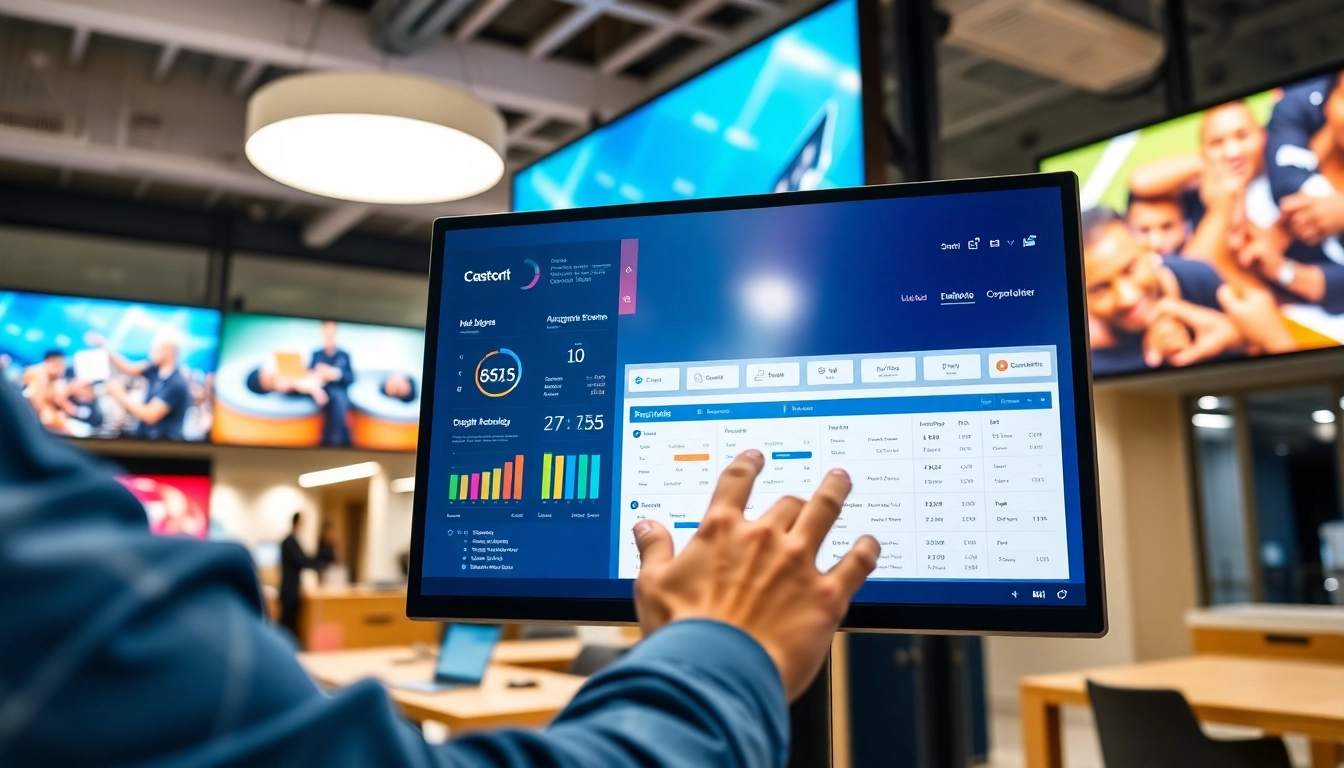Introduction to AI Checker
In an age where technology is rapidly evolving, the emergence of artificial intelligence (AI) has significantly transformed various industries, including content creation. As the use of AI in writing becomes more prevalent, so does the necessity for tools that ensure the authenticity and integrity of the text generated. This is where the ai checker comes into play. An AI checker analyzes text to determine its origin—whether it was produced by a human or by an AI model. This ability is increasingly critical for educators, content creators, and anyone committed to maintaining high-quality standards in their written work.
What is an AI Checker?
An AI checker is a specialized tool designed to analyze textual content for authenticity. By leveraging advanced algorithms and machine learning techniques, these tools evaluate a text’s uniqueness, identifying patterns and structures typical of AI-generated content. The underlying technology may include natural language processing (NLP), statistical analysis, and deep learning, allowing for precise differentiation between human and AI writing styles. AI checkers are invaluable in various sectors, including education, journalism, marketing, and content creation, ensuring that authored content is credible and trustworthy.
Importance of AI Checkers in Modern Content Creation
The integration of AI in content creation has introduced unprecedented complexity. As AI-generated texts proliferate, so too does the challenge for content creators, educators, and businesses to discern genuine human input from machine-generated content. AI checkers provide a necessary solution by enhancing the integrity of written communication. They allow users to uphold academic standards, maintain brand credibility, and ensure compliance with ethical guidelines. Furthermore, as the tools for generating AI content become more sophisticated, the need for reliable detection methods will continue to grow, solidifying AI checkers as essential instruments in modern content creation.
How AI Checkers Work
AI checkers operate through a multi-faceted approach. Initially, they collect a large dataset of both human-written and AI-generated texts to train their models. Utilizing statistical analyses, these checkers identify markers such as sentence structure, vocabulary usage, coherence, and stylistic trends. Once trained, an AI checker analyzes new content against its established models. Different tools might apply varying methodologies, such as:
- Text Comparison: Comparing submitted content against a database of known texts to find similarities.
- Statistical Modeling: Using algorithms to identify statistical anomalies that may indicate AI involvement.
- NLP Techniques: Understanding language nuances to gauge whether writing aligns with human-produced materials.
Through these processes, AI checkers provide users with comprehensive reports that highlight areas of concern, enabling informed decisions regarding the content’s authenticity.
Benefits of Using an AI Checker
Enhancing Content Authenticity with AI Checker
Ensuring content authenticity is critical, especially in academic, professional, and digital environments where trust plays a pivotal role. By utilizing an AI checker, individuals and organizations can:
- Validate Sources: Confirm the originality of submitted work, thus maintaining the integrity of academic submissions and professional publications.
- Avoid Misinformation: Ensure that the shared content is trustworthy and not AI-generated, which might mislead audiences.
- Build Credibility: Foster an image of reliability by presenting unique content that reflects genuine effort and thought.
Through these means, AI checkers help cultivate a responsible digital culture that values authenticity in writing.
Time Savings and Efficiency
In the fast-paced world of content production, efficiency is paramount. AI checkers can drastically reduce the time spent on content verification. Instead of manually reviewing every piece for potential AI influence, users can upload documents into the checker, receiving immediate insights and scores regarding authenticity. This time-saving capability is essential for organizations and educators overwhelmed with large volumes of submissions. Furthermore, the ability to automate parts of the reviewing process alleviates workloads, allowing professionals to focus on content quality and engagement rather than basic verifications.
Improving Academic Integrity with AI Checker
With the rise of AI-generated content, academic integrity is increasingly at risk. Schools and academic institutions face challenges in maintaining standards as students often turn to AI tools for assistance. By implementing AI checkers, educational authorities can ensure that submissions are original and that students are held accountable for their work. The use of these tools can significantly deter academic dishonesty by promoting a culture of originality and discouraging the reliance on potentially deceptive AI-generated content. In consequence, institutions can better uphold their reputations and provide fair assessments of student capabilities.
Common Misconceptions About AI Checkers
AI Checkers vs. Plagiarism Checkers
One pervasive misconception is that AI checkers and plagiarism checkers are interchangeable tools. While both share the objective of ensuring content authenticity, they serve distinct purposes:
- Plagiarism Checkers: Focus on identifying copied content from other sources, emphasizing fraudulent claims of authorship.
- AI Checkers: Concentrate on differentiating between human and AI-generated content, even if that content is original.
Understanding these differences is essential for choosing the appropriate tool for specific content verification needs.
The Accuracy of AI Checkers
The accuracy of AI checkers is a common point of discussion. While these tools have advanced significantly, various factors can influence their effectiveness:
- Quality of Training Data: The success of an AI checker is heavily contingent on the quality and diversity of the data used during its training phase. A well-trained model produces more reliable results.
- Algorithm Updates: As AI technology evolves, continuous updates to algorithms are necessary for maintaining detection accuracy.
- Text Complexity: Highly complex or nuanced texts may pose challenges for detection algorithms, necessitating careful interpretation of results.
Users should remain informed about the performance metrics of different AI checkers to assess their reliability effectively.
Limitations of AI Checkers
Despite their advantages, AI checkers have limitations that users should be aware of before relying solely on them. Limitations may include:
- Lack of Context Understanding: AI checkers may not grasp the nuances of context, leading to potential false positives or negatives.
- Dependence on Text Samples: If AI-generated content mimics human writing effectively, the checker may struggle to differentiate the two.
- Inability to Detect Plagiarism: Users must remember that while AI checkers gauge authenticity, they do not replace traditional plagiarism detection methods.
A comprehensive approach that incorporates various verification methods will yield the best results in content authenticity assurance.
How to Choose the Right AI Checker
Key Features to Look For in an AI Checker
When selecting an AI checker, it’s vital to consider several key features that can enhance the user experience and improve detection accuracy:
- User-Friendly Interface: A tool that is easy to navigate will encourage more frequent use.
- Comprehensive Reporting: Look for AI checkers that provide detailed reports, including highlighted areas of concern and suggestions for improvement.
- Multi-Model Detection: Tools that can identify outputs from multiple AI models—including the latest releases—will ensure broader applicability.
- Data Security: Privacy measures should be clearly defined to ensure that user data remains confidential and secure.
Evaluating these features can help users make informed decisions that suit their specific needs.
Pricing Models of Different AI Checkers
Pricing models for AI checkers can vary significantly, including:
- Free Versions: Many tools offer basic functionality at no cost, which can be suitable for casual users.
- Subscription Plans: Premium services often provide advanced features, with pricing tiers that cater to different levels of usage.
- Pay-Per-Use Models: Some checkers charge fees based on usage, making it more accessible for sporadic users.
Understanding the cost implications along with the offered features can prevent users from overspending or underutilizing the available resources.
User Reviews and Recommendations
User feedback is invaluable for gauging the effectiveness of an AI checker. Recommendations can provide insights into:
- User Experiences: Reviews can reveal how well a tool performs in real-world applications.
- Customer Support: Insights regarding the response times and helpfulness of customer service can aid potential users in making informed selections.
- Feature Set Satisfaction: Identifying which features resonate most with users can help prospective customers align their needs with available tools.
Delving into user reviews ensures a more customer-centric approach to selecting an AI checker.
Future of AI Checkers
Trends Shaping the AI Checker Landscape
The development of AI checkers is an evolving landscape influenced by several trends:
- Increased AI Literacy: As understanding of AI grows, users will demand more sophisticated detection capabilities.
- Integration with Other Tools: Future AI checkers could work seamlessly with content management systems, enhancing user convenience.
- Expansion of Use Cases: Beyond academic and professional writing, AI checkers may find applications in sectors ranging from marketing to legal documentation.
Embracing these trends will guide the evolution of AI checkers to meet emerging demands effectively.
Integrating AI Checkers with Other Tools
For heightened effectiveness, the integration of AI checkers with other digital tools can lead to powerful synergies. Potential integrations include:
- Content Management Systems: Equipping CMS platforms with AI checker functionalities can automate authenticity checks during content creation.
- Plagiarism Detection Tools: Combining features from both tools can provide comprehensive text analysis, enhancing the reliability of content validation.
- Project Management Software: Linking AI checkers with project platforms streamlines workflows by incorporating authenticity checks within collaborative processes.
Such integrations will create more holistic solutions for content verification in the future.
Impacts on Content Strategy and Creation
As AI checkers become standard components in content strategy, their impact will reshape how content is conceptualized and produced. Businesses and individuals relying on these tools will likely see:
- Improved Content Quality: Enhanced standards for authenticity will lead to higher quality outputs across all media formats.
- Stronger Brand Ethics: Organizations committed to transparency will build more trust with audiences by ensuring content integrity.
- Greater Individual Accountability: Creators will be encouraged to put forth genuine effort in their work, fostering a culture of originality and creativity.
The culmination of these effects will underpin a more responsible and engaged content creation community moving forward.














Leave a Reply